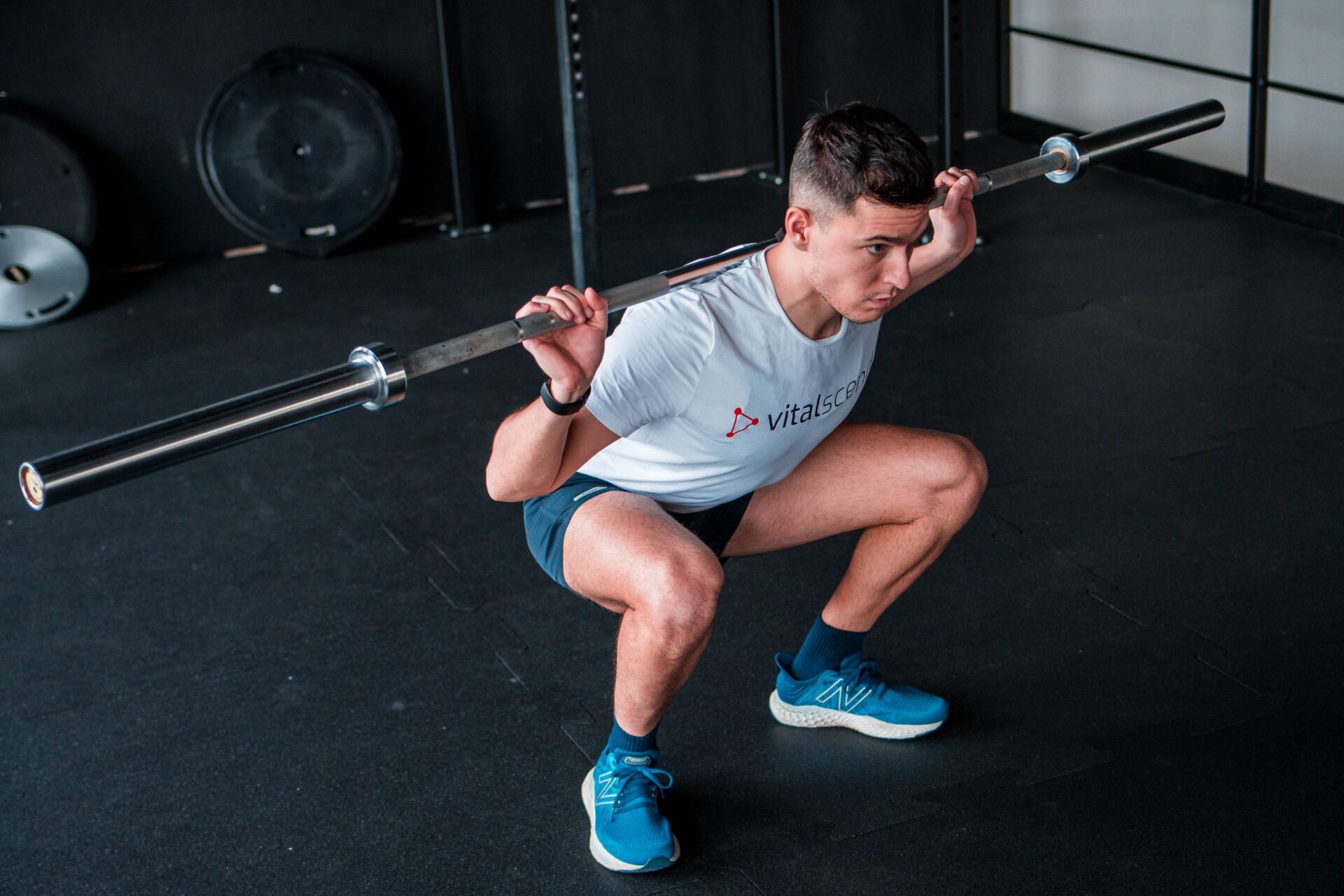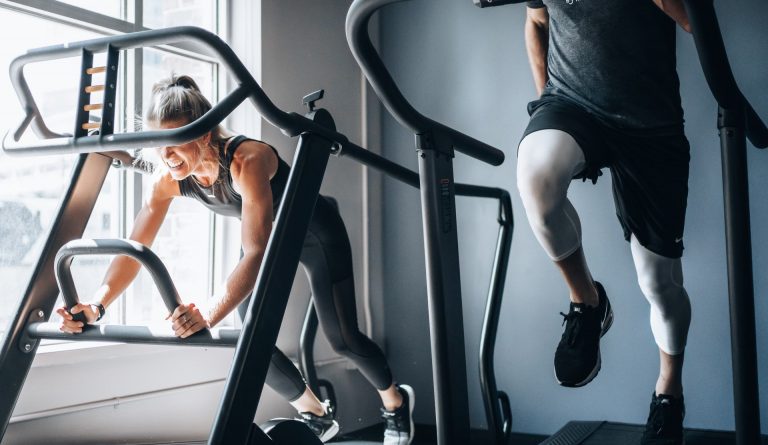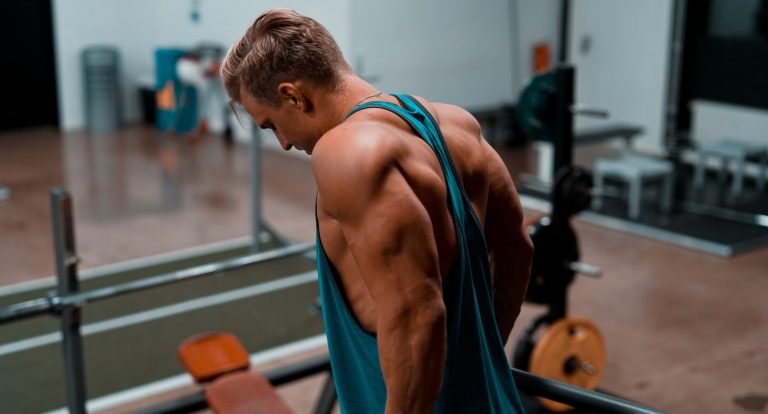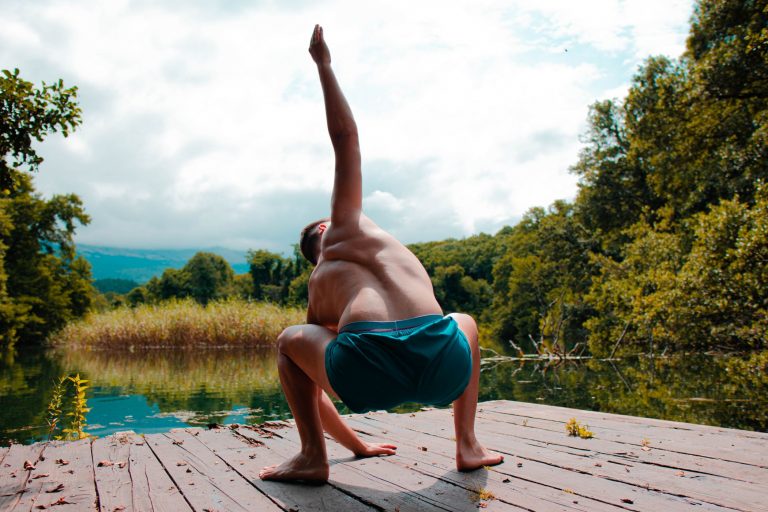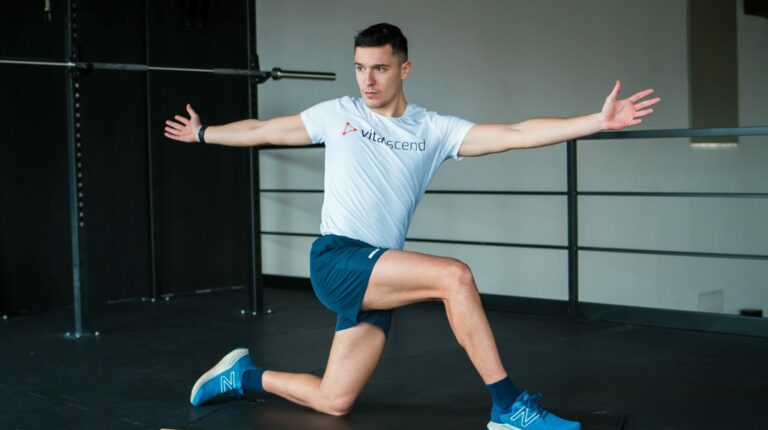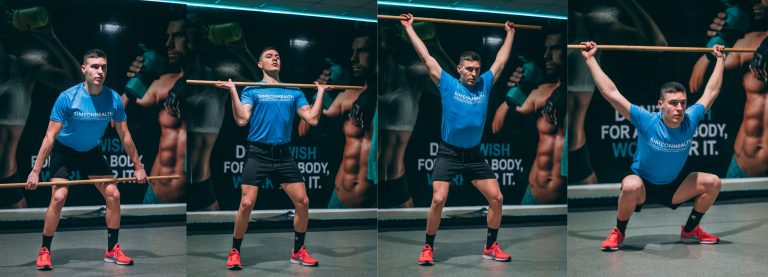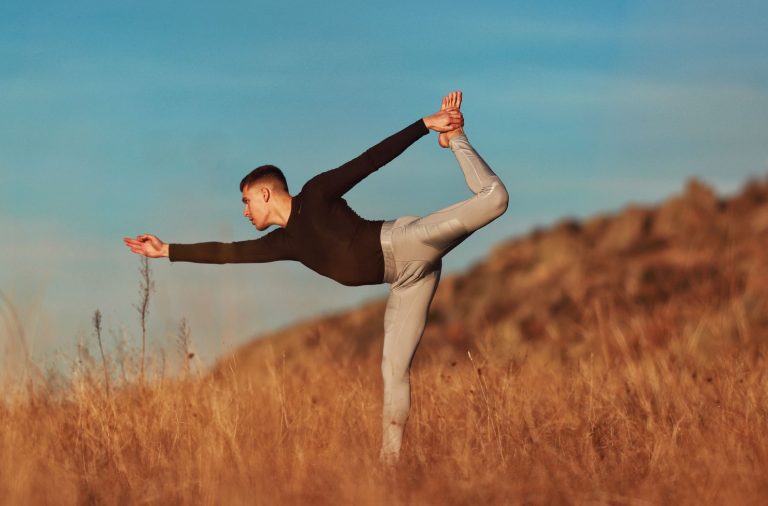Improve Squat Form – 7 Hip and Ankle Mobility Exercises
The squat is truly a marvel of an exercise. It’s a fundamental functional exercise, essential for everyday movement. Squatting deep is a primal movement pattern that one should train and maintain for optimal strength and mobility.
It improves the functionality of our bodies and our ability to move. It’s the holy grail for building lower body strength, lean muscle mass, and improving athletic performance. The squat is definitely one of the most important exercises that give you the best return on investment. It improves numerous aspects of physical health, thus being the main one, picked in strength and conditioning for athletes.
The Perfect Squat
Many people have mobility limitations which restrict the ability to go in a dull, deep squat. To squat fully, one has to be equipped with proper leg and core strength, great balance, and mobile hips and ankles. Sufficient hip mobility is a pre-requisite for an optimal squat.
The so-called perfect squat looks something like this:
- Squat depth is below parallel
- Full feet on the floor, weight distributed throughout the full feet
- Hips-with or wider stance, toes pointed slightly outward
- Hips open, knees point in the direction of your toes
- Neutral and straight spine
- Core activation – intraabdominal pressure
- Minimal pelvic swing or tilt
While not everyone can get to a perfect squat, most can greatly improve their squat form with a little bit of work. The main focus should be on these 4 key areas.
Hip and Ankle Mobility
Thoracic Mobility
Core Activation (IAP)
Control and Balance
Improving hip and ankle mobility, as these are the primary deficits that restrict squatting below parallel. For these, we incorporate both passive stretching and dynamic mobility drills that help improve the range of motion in the hips and ankles.
Thoracic mobility is a big factor, as most people find it quite uncomfortable to hold a big barbell with their hands behind their backs. Opening up the thoracic region, improving shoulder mobility, and reducing neck tension will allow for proper positioning, with a straight spine.
Core tightness and intra-abdominal pressure. A proper squat is done with a lot of muscle activation, not passively. Tightening the abdominals helps relieve pressure on the lower back [spine] and trains the core as well.
Control and Balance → to execute a full, heavy deep squat we must control it. The eccentric phase, when we go down in the squat should be done slowly, with control. In a way we resist the weight down, we don’t just flop and hope we catch it. On our way up we should be pushing down [and externally] through the ground, to drive the weight up.
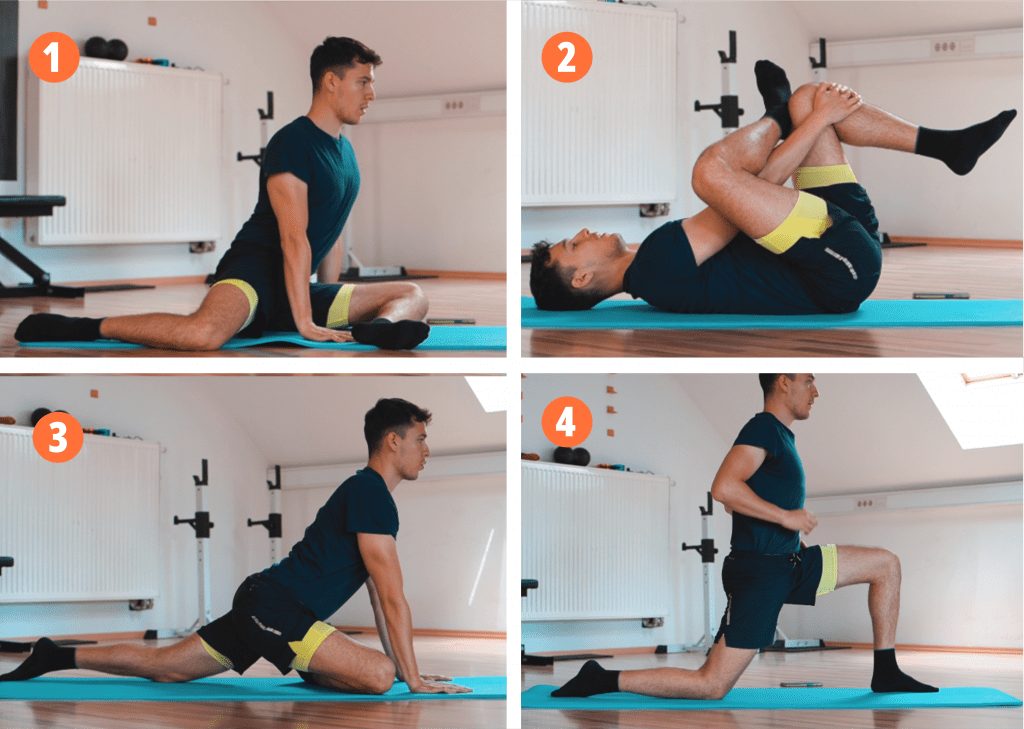
7 Exercises to Improve Squat Form
While numerous exercises can help improve our squat form, there isn’t a better one than the squat itself. In a way, being mindful, learning to control the movement, positioning properly, opening our hips, and pushing through the ground improves all aspects that lead to deeper, better, heavier squats.
Note
Many mobility exercises, like hip circles and ankle stretches, help improve our squat depth acutely. This is why it’s great to perform them right before a squatting session, to gain mobility and be primed for squatting before it.
Also, being properly warmed up improves mobility in the whole body, as tissues are much softer. This again determines your ability to squat lower and be more mobile. Until one gains perfect mobility, it’s advisable to do such mobility exercises. Afterward, only doing movements in a full range of motion, a deep squat, for instance, takes care of maintaining that mobility.
Now let’s hop onto our list of exercises.
Foam rolling → glutes and lateral portion of the quads, and calves
Foam Rolling helps release tightness and tension in the muscles. It’s a great pre-workout routine to prepare the muscles for movement and enhance mobility. This is achieved through improved circulation, reduced reflexes, and improved muscle elasticity.
The three key areas to focus on are the abductors, which are on the lateral side of your thigh [quads], the gluteus muscle, and the inner and outer portions of the calves. Gaining elasticity, even acutely, helps you improve your squat form as it releases tension stored in the hips, allowing you to squat deeper. Massage about 1 minute per muscle, on each side. It should take you about 5-6 minutes to cover it all.
Note that for rolling to be effective, we need to apply just enough pressure to release the muscle. Too little does nothing, too much activates the muscle instead of releasing it. We must find the sweet spot in between, where we intentionally massage trying to release the muscle with each exhale. It should be a bit uncomfortable to be effective.
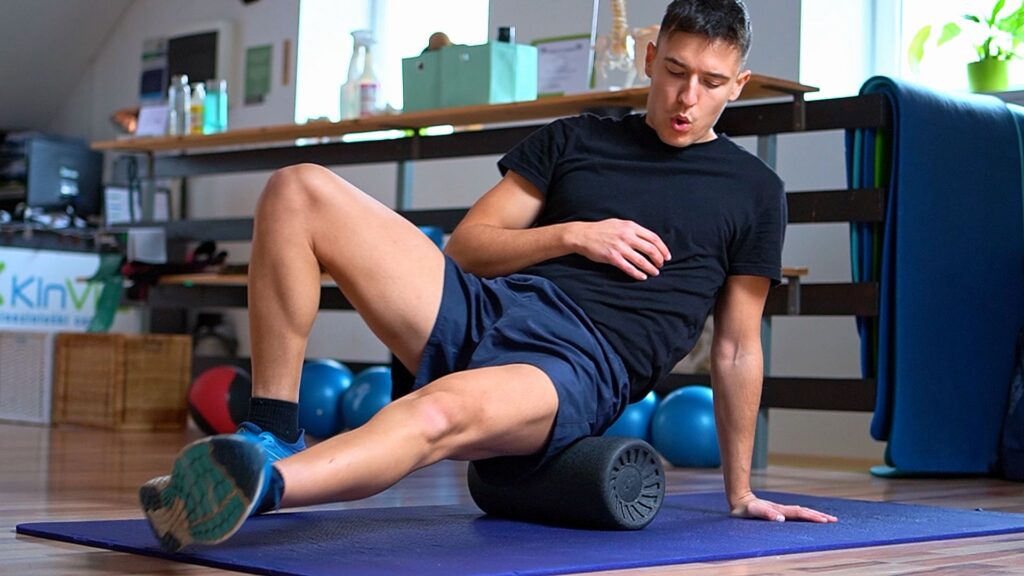
90-90 Stretch → open your glutes and abductors
The 90-90 stretch is a dynamic hip mobility exercise that stretches out the outer portion of your thighs, including the gluteus and abductor muscles. The secret in 90-90 is unlocking both hips at the same time, training external rotation on one, and internal rotation on the other leg.
Get seated on the floor and bend one leg in front of your body, the hip is rotated out. Bend the knee on your rear leg, so both knees are flexed at about 90 degrees. Try to position so low that the knee and ankle touch the ground. The spine is neutral, you slowly fall toward your front leg and feel a deep stretch in your glutes. After 5 seconds position you transition on the other side, trying to keep your feet in contact with the ground.
Every transition is done actively, keeping our heels on the ground. The point is to incorporate specific hip rotator muscles that help both activate [strengthen] them and warm up.
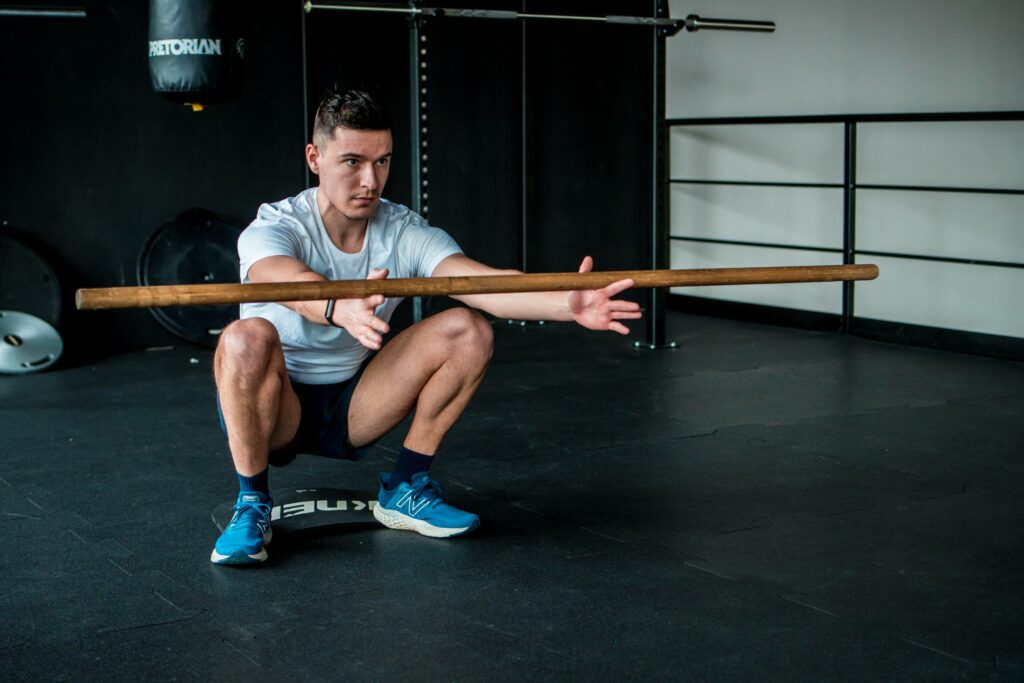
Deep Squat → squat deep and hold
There’s no better movement to improve your ability to squat deep, than the deep squat. It literally works all main areas that contribute to a perfect, deep squat. We need to spend some time squatting, to be better at it.
To perform the deep squat, stand hips-width apart. Slowly descend [5s] with control, while opening your hips externally. This builds the needed stability and endurance in your legs. Go as low as you can, trying to extend your spine to neutral, as much as you can. This last phase can be more passive, especially for those who can squat very deep. But even so, we try to keep it active by pushing our hips out, squeezing our glutes, and straightening up the spine. We hold the deep squat for 5-10 seconds and slowly rise. Repeat about 10 such, slow and controlled deep squats with pause at the end, to stretch it out.
This opens your hips, stretching out the inner tights [adductors] which are often tight. It improves hip stability, as we coactivate specific hip muscles to hold the squat. Additionally, it improves ankle mobility and stability, a key element for a perfect squat.
Squat hip rotation → external and internal rotation
The squat hip rotation is a dynamic exercise emphasizing external and internal rotation. Besides holding the squat, we train the ability to push the hip in or out. This improves the flexibility of abductors and adductors, which helps us push the hips out.
Squat deep down, open your hips, and straighten your spine. Now lift your heels and stand on your toes. Slowly transfer the weight on the ball of your right foot. First, push the knee outward for 1 sec. then inward for 2 sec. Get back on both feet and repeat the transition on the other side. About 8 reps on each leg should be enough.
This exercise also improves ankle mobility, as we’re squatting with our heels on the ground. This motion lightly stretches our Achilles and calf muscles – enhancing our squat form.
Fishermen ankle mobility – emphasize ankle dorsiflexion
One of the most limiting factors for a deep squat is tight ankles. To an extent, many can improve this by stretching the calf muscles and lengthening the Achilles tendon. The former one is done acutely, by training the nervous system to reduce reflexes – or activation upon stretching.
As you’ve seen in many Olympic weight lifters, aside from a couple of deep squats, leg swings and hip rotations one of the most common exercises they include is the Fisherman ankle mobility. That’s because it’s one of the best weapons for unlocking your ankles.
Position yourself in a kneeling lunge. The goal is to push the knee as far forward as you can while keeping your heels on the ground. This stretches the posterior part of your Achilles tendon and calf muscles. These two need quite a lot of force to lengthen, so adding weight on the top of your knee to increase the stretch is a common practice. About 2-4 minutes on each leg should be enough. The intention is to stretch and relax the muscles on every exhale.
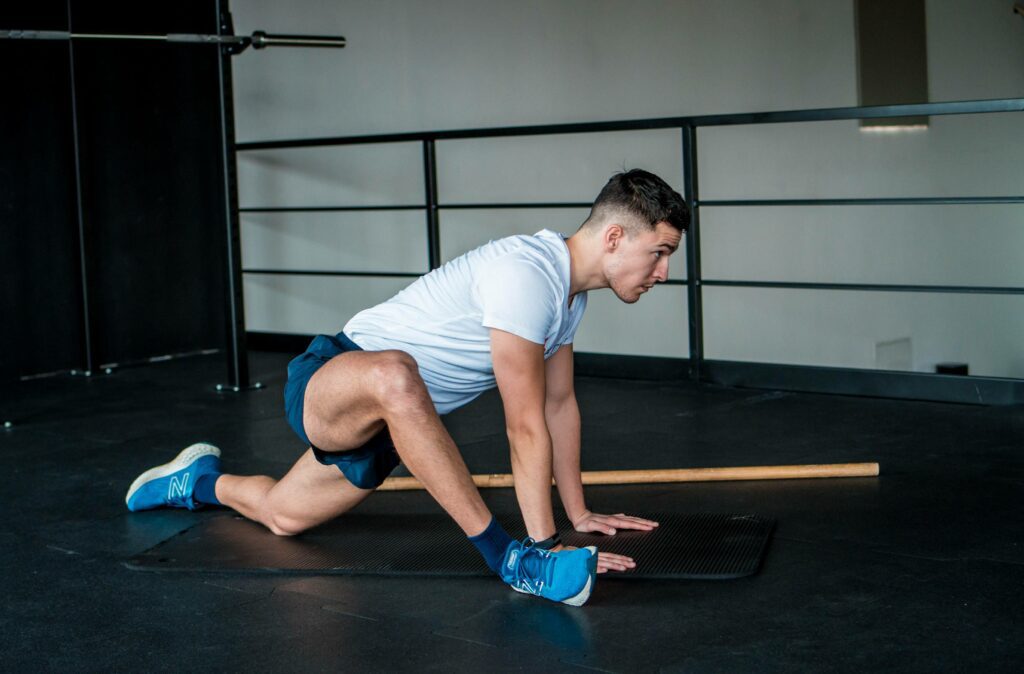
Iliopsoas and quad stretch → seated lunge
Tight quads and iliopsoas [hip flexor] muscles usually develop due to too much sitting. Such tightness is associated with an anterior pelvic tilt, where your lower back is arched a bit too much. This posture contributes to low back pain and hip tension which directly affects how deep our squat is. It’s exactly the opposite of what we need to squat deep with a straight spine, not overarching our low back. This is why we’re stretching the front part of the hips.
Get in a kneeling lunge position on your mat. Slowly tilt your pelvis forward which will help stretch out the hip flexor. If you already feel a deep stretch, just breathe deep and progress by pushing the hips forward. if not, you can lift your opposite arm upo and add a slight bend on the side. About 2 sets of 30 seconds on each side should be enough.
Afterward, the second part of this exercise is stretching the quadriceps muscle. If you can, grip your rear foot and bring it toward your body to stretch your quads. If not, you can use a band over your foot, grip it, and pull your leg towards your body. Same numbers, 2 sets of 30 seconds should be enough.
Step Ups + Toe Lifts – single leg balance and ankle stability
The key to perfecting your squat is ankle stability. It’s the key peripheral element that helps you stabilize during the deep squat, as it helps control weight distribution and prevent shifting too far forward.
To train ankle and knee stability we’ll do a slow step up [and down]. Get yourself a nice bench and step up with your right foot. Slowly descend [3s] untill you touch your foot to the ground. During the descend, you coactivate numerous ankle and knee stabilizing muscles that eventually improve single-leg balance. Do 8-10 reps on each leg, slow down the eccentric phase to about 3 seconds. You do two reps on each leg, and right afterward you add a superset.
As a superset, added right after the first exercise is toe lifts. So, when you finish your step-ups go with your back against the wall. Lift your toes, trying to really activate the tibialis anterior – a muscle at the front of your shin bone. Minimize any compensatory [extra] movement in the hips or spine. after about 15-20 reps, go back to your step-ups-
The heavier the weight and the deeper the squat → the more your balance is challenged. Training ankle stability and tibialis strength help you stabilize, control weight shifting, and push from the lowest point in the squat.
Poor Hip Mobility – Why You Want a Good Squat
As we’ve discovered, poor hip mobility is a common issue that can lead to a range of negative consequences, including injuries, pain, and poor performance.
One way in which poor hip mobility can contribute to injuries is by increasing the risk of overuse injuries. When the hips are restricted, other joints and muscles may compensate, leading to an increased load on those areas. This can result in overuse injuries, such as tendonitis or stress fractures.
Poor hip mobility can also lead to pain, particularly in the lower back and hips. When the hips are restricted, it can cause muscle imbalances that shift your pelvis forward and increase the arch in your spine. This lordotic posture leads to low back pain.
Finally, poor hip mobility can also impact athletic performance. When the hips are restricted, it can limit the range of motion and power production, leading to a decrease in performance. This can be particularly evident in sports that require explosive movements, such as running or jumping.
Conclusion
Poor hip mobility is related to a range of negative consequences, including injuries, pain, and poor performance. It is important to address hip mobility to maintain overall health and optimal athletic performance.
Conclusion
- The squat is the fundamental movement for physical health, strength, and mobility. It’s a functional exercise that gives the best return on investment when training for muscle mass, strength, or functionality.
- While there isn’t a isn’t a one-size fits all perfect squat, most should focus on a few principles → full feel on the floor, knees out pointing in toes direction, straight and neutral spine, depth below parallel, a tight core, and a minimal pelvic swing.
- To improve squat mobility we need to squat more, squat for longer, and squat deeper. Intentionality matters. The goal is opening our hips, straightening up the spine, controlling the movement, and pushing through on our way up.
- The key areas to focus on → hip mobility, adductor flexibility, ankle mobility, and stability. Our top picks include the 90-90 transfers, deep squats [slow 5s], squat hip rotations, fishermen’s ankle mobility, quad + iliopsoas stretch [kneeling], step-ups, and toe lifts.

